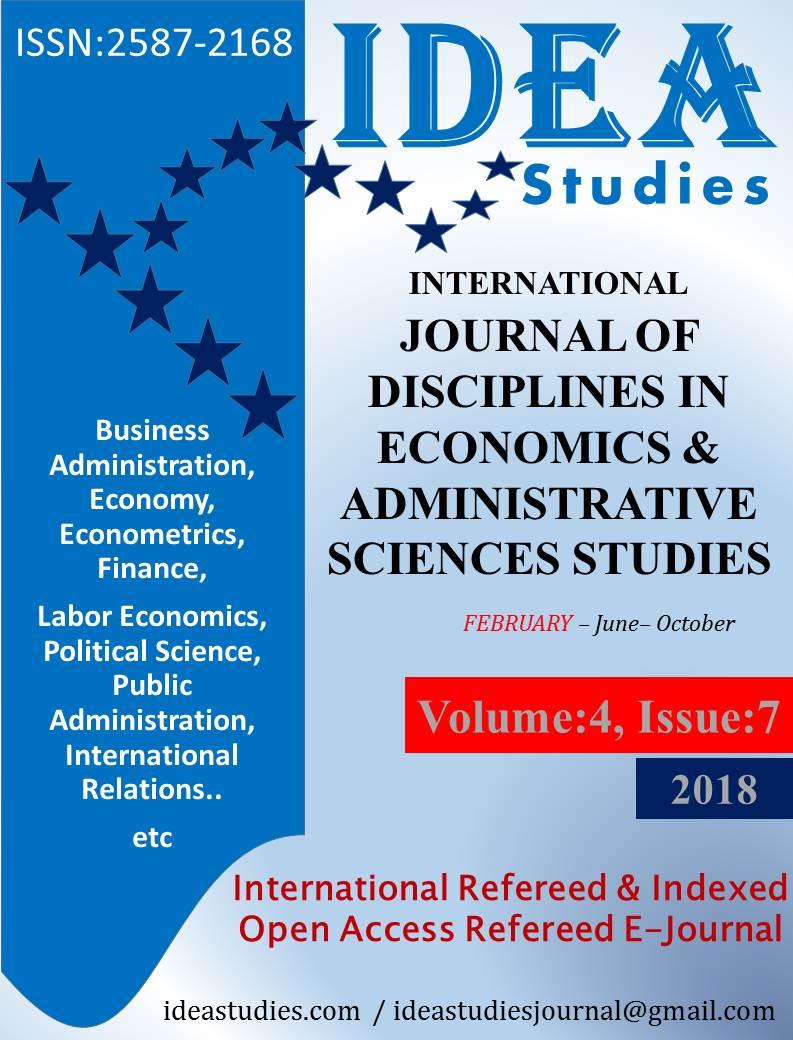BIST 100 VE 30 ENDEKSİNDEKİ FİRMALARIN SATIŞ AMAÇLI ELDE TUTULAN DURAN VARLIKLARININ TFRS 5 ÇERÇEVESİNDE İNCELENMESİ
Author :
Abstract
Duran varlıklar satış amacıyla elde edilmişse ya da satış amacıyla elde bulunduruluyorsa TFRS 5’e göre dönen varlıklar içerisinde “Satış Amaçlı Sınıflandırılan Duran Varlık ” başlığı altında ayrı raporlanmalıdır. Bu varlıklara ait borçlar da bilançoda diğer borçlardan ayrı olarak gösterilmelidir. Duran varlıkların azalması ve dönen varlıkların artması sonucunu doğuran bu değişiklik, şirketlerin likidite problemlerinin tespitinde kullanılan işletme sermayesine ve likidite rasyolarına olan etkisinin değerlendirmesi açısından önem arz etmektedir. Satış amaçlı olarak sınıflandırılan bir duran varlık veya varlık grubu, ilk muhasebeleştirme tarihinde ve ileriki raporlama zamanlarında; ilgili varlığın veya varlık grubunun net defter değeri ile satış maliyetleri düşülmüş gerçeğe uygun değerinden düşük olanı ile değerlemeye tabi tutulmakta ve bu varlıklar için amortisman ayrılması durdurulmaktadır. Bu çalışmada, işletmelerde satış amaçlı elde tutulan duran varlıkların; sahip olunduğunda, dönem sonu değerlemelerinde ve elden çıkarılmasında, yapılması gereken muhasebe kayıtları standarda ve vergi mevzuatına göre örneklerle açıklanmıştır. Bununla birlikte, BIST 100 ve 30 endeksindeki firmaların Kamuoyu Aydınlatma Platformunda yayınlanan bağımsız denetimden geçmiş mali tabloları ve dipnot açıklamaları 10 yıl itibarıyla tek tek incelenmiş ve satış amaçlı elde tutulan duran varlık hesabı kullanılıp kullanılmadığı tespit edilmiştir. Yapılan çalışmada satış amaçlı duran varlık gurubunun kullanımının bankalarda daha yüksek olduğu görülmüştür.
Keywords
Abstract
If non-current assets are obtained for sale or held for sale, should report as current assets group under the title of “Non-Current Asset Classified as For Sale” based on IFRS 5. Debts belonging to these assets should be shown as a separate item from the others debts in the balance sheet. This case results in a decrease in the non-current assets and an increase in the current assets, is important for enabling evaluation on the effect of the net working capital and liquidity ratios for identifying liquidity problems of the companies. A non-current asset or group of assets, classified as held for sale, are evaluated at the lower of fair value less costs to sell and net book value of the related asset at the time of initial accounting and at future reporting times or asset group and their amortization process is ceased. In this study, accounting records of non-current assets held for sale in enterprises, which should be made at the time they are owned, they are evaluated at the end of the period and they are disposed, are explained with examples in agreement with standard and tax legislation. In addition, independently audited financial statements and footnote explanations published on the Public Disclosure Platform of companies in BIST 100 and 30 indices have been examined individually for 10 years and it has been determined whether the accounts for assets held for sale are used. The study shows that the usage of “non-current asset held for sale” account is higher in banks.
Keywords
- Akbulut A. (2014). Finansal Tabloları Bağımsız Denetime Hazırlama Kılavuzu (VUK/TDHP
- Akbulut A. (2014). Finansal Tabloları Bağımsız Denetime Hazırlama Kılavuzu (VUK/TDHPFinansal Tablolarının TFRS Finansal Tablolarına DönüĢtürülmesi ve Sunumu), Maliye Hesap Uzmanları Derneği Yayınları.
- Akbulut A. (2015). GeniĢletilmiĢ ve Gözden GeçirilmiĢ KarĢılaĢtırmalı TMS/TFRS–Vergi Uygulamaları ve Sonuçları, Maliye Hesap Uzmanları Derneği Yayınları.
- Akdoğan, N., Sevilengül, O. (2007). Türkiye Muhasebe Standartlarına uyum için Tekdüzen Hesap Planında yapılması gereken değiĢiklikler. Mali Çözüm Dergisi, (84), 29-70.
- Akdoğan, N., AktaĢ, M., Anaforoğlu, P., Atalay,B., Eren, K., Özdemir, C. (2015). “Ulusal VeGözaltı Pazarı‟nda ĠĢlem Gören ġirketlerin TFRS 5 Kapsamında SatıĢ Amaçlı Duran VarlıkGrubunu Kullanım Eğilimlerinin 2009-2014 Dönemi Finansal Tablolarında Ġncelenmesi” Muhasebe ve Vergi Uygulamaları Dergisi Kasım 2015; 8 (3): 153-200.
- Akpınar, A. (2017). “TMS 40 Yatırım Amaçlı Gayrimenkullerin BIST 100 ve BIST 30Endeksindeki Firmalarda 2007-2016 Yılları arasında Kullanımlarının Ġncelenmesi”, International Journal of Academic Value Studies (Javstudies), Vol:3, Issue:15, 224-240.
- ÇavuĢoğlu K., Utku, B. D. (2016), “Duran Varlıkların TFRS 5 Çerçevesinde Değerlendirilmesi veBIST (Borsa Ġstanbul) 30Endeksinde Yer Alan Firmaların TFRS 5 Uyarınca SatıĢ Amaçlı EldeTutulan Duran Varlıkların Sınıflandırılmasına Yönelik Olarak Ġncelenmesi”. Journal of Accounting, Finance and Auditing Studies 2/1 (2016) 88-111.
- DurmuĢ, A. H., ġen, Kıymetli, A. (2013-2014), T.C. Ġstanbul Üniversitesi KGK GeçiĢ Dönemi Eğitim Materyali-Türkiye Muhasebe Standartları ve TMS-TFRS Yorumları,
- Gökgöz, A. (2012). “SatıĢ Amaçlı Elde Tutulan Duran Varlık veya Varlık GrubununMuhasebeleĢtirilmesi”. AĠBÜ- ĠĠBF Ekonomik ve Sosyal AraĢtırmalar Dergisi, 8(20. yıl özel sayısı), 67-86.
- Örten, R., Kaval H., Karapınar, A. (2008), Türkiye Muhasebe-Finansal Raporlama Standartları Uygulama ve Yorumları, TMS-TFRS, Gazi Kitabevi, Ankara.
- Özerhan, Y., Yanık S. (2012), IFRS/IAS ile Uyumlu TMS/TFRS Açıklamalı ve Örnek UygulamalıTürkiye Muhasebe Standartları Türkiye Finansal Raporlama Standartları, Türmob Yayınları 427, 2. Baskı.
- Sağlam, N.; Yolcu, M.; Eflatun, A. O. (2016).Örneklerle UFRS Kayıtları,Özbaran Ofset Matbacılık San.Ltd.ġti., Ankara.
